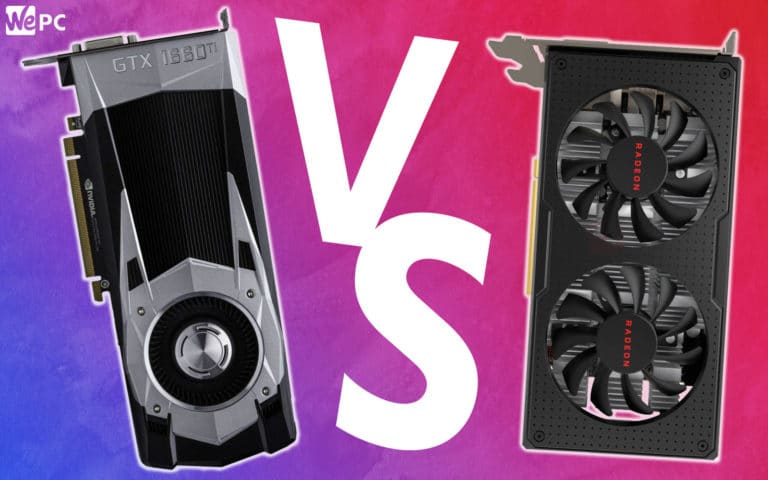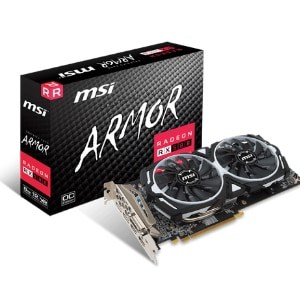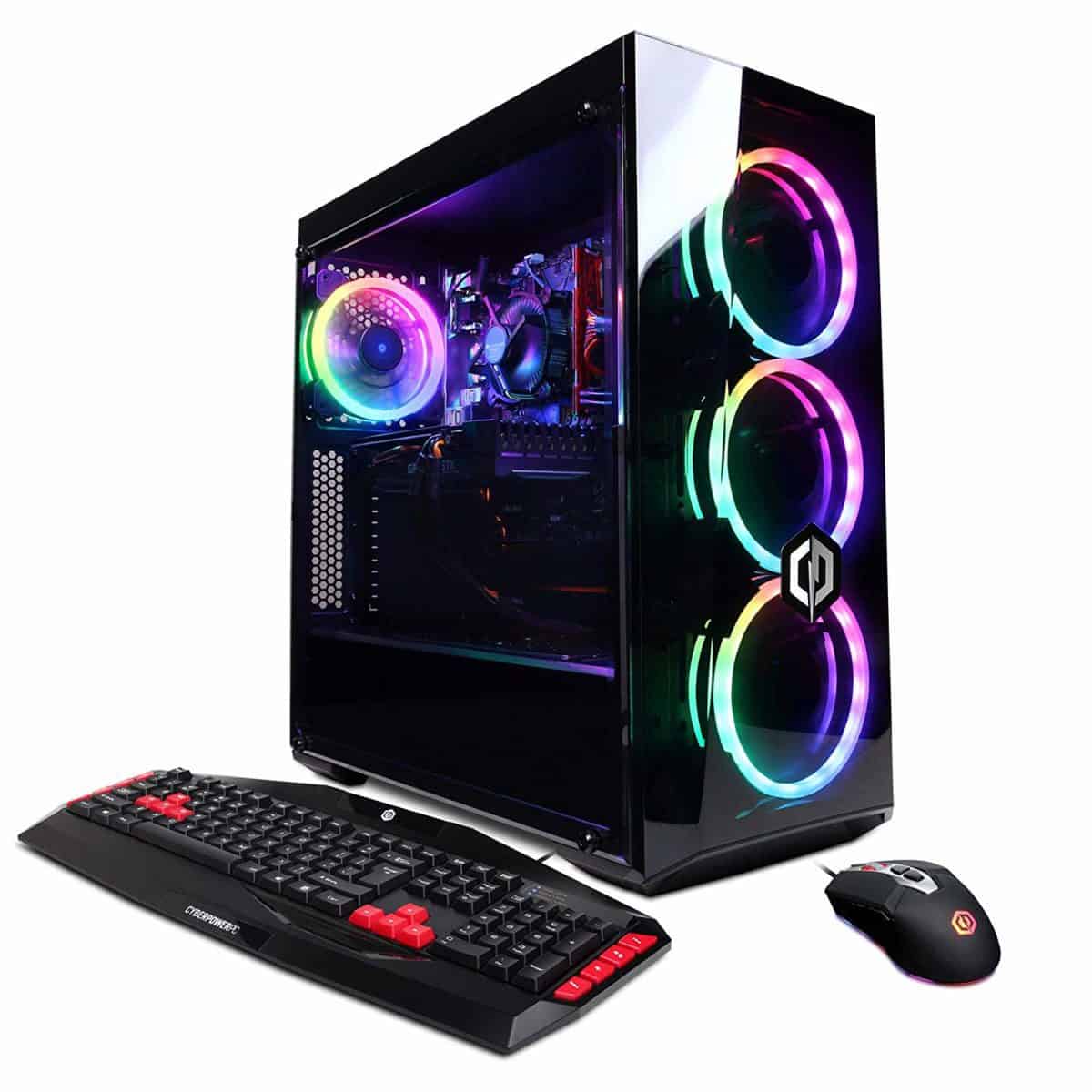GTX 1660 Vs. RX 580
Let's have a look at these two low-end cards to see if we can find a use for them in this day and age

AMD/Nvidia
There’s no doubt that Nvidia has been dominating the market for top-of-the-range GPUs consistently for quite some time, although AMD’s Radeon RX series has certainly secured them a foothold on the ladder.
When it comes to the midrange market of graphics cards, typically you’d find that there’s more of an even playing field, but Nvidia came to claw back the small stake AMD had claimed for themselves with the release of their GTX 1660-series.
Within a year of the RX 480’s release, AMD followed up with the RX 580, a new and improved version of this former favorite budget GPU. They upgraded the cooling system and you can expect to see 10% faster clock speeds as they attempt to regain some of the market audience that swayed more towards Nvidia’s GTX 1060, sitting at around the same price.
The GTX 1660 came after the GTX 1660 Ti, and where the RX 580 was designed to be an improvement on its former chip, the GTX 1660 was released as an affordable, slightly slower version of the 1660 Ti to appeal to the midrange market.
With one graphics card upping its game and the other dropping a few cores and some speed, which of these two GPUs wins in the battle to be the best of the middle ground?
Architecture
The RX 580 features second generation Polaris architecture which, despite what its name suggests, isn’t actually all that different from the 400-series architecture. The 14nm Polaris 10 chip was somewhat of a disappointment to those expecting otherwise and is the same as the earlier RX 570 and RX 470.
It features the same number of 2304 Stream Processor cores with 144 texture mapping units and 32 render outputs. You might be surprised to see more cores here than in the GTX 1660, but that’s because it benefits from Nvidia’s Turing NVENC TU116 architecture, meaning each core performs up to 50% more effectively.
There are 1408 CUDA cores, which is less than the 1536 cores found in the GTX 1660 Ti and results in a 20% reduction in speed in comparison, but it still performs well and has a lower price point by around the same percentage.
The GTX 1660 also boasts faster clock speeds, both base and boosted, with 1530MHz and 1785MHz respectively. The Nvidia Turing architecture allows for a bigger difference between the base clock and overclocked compared to the gap between the RX 580’s 1257MHz base clock and the 1340MHz boosted clock.
Cooling
The GTX 1660 has a maximum temperature of 95 degrees celsius, although it shouldn’t really reach anywhere near this limit. It runs at a steady 120-watt TDP which helps to regulate the temperature for an impressively smooth performance.
The RX 580 is an absolute sizzler by comparison. It consumes significantly more power than even the Radeon RX 480, for example, especially when under a particularly demanding load. It has a whopping power draw of 185 watts which is far more than the 120-watt TDP of the GTX 1660, consequently reaching high temperatures.
It runs much hotter than the GTX 1660, especially when overclocked, so it’s worth looking around for a decent cooling system to invest in to keep your graphics card from overheating.
Dimensions
There’s a reasonable difference in die size between the RX 580, which has a die area of 232mm-squared with 5700 million transistors and 2304 shading units, and the GTX 1660, with its larger die area of 284mm-squared and 6600 million transistors.
The graphics card measures 241mm in length with a dual-slot cooling solution spanning its width. The GTX 1660 is smaller at 229mm lengthwise, but it has a dual-slot cooling system to match the RX 580. You’ll have plenty of room left to kit out the rest of your board without having to worry about your graphics card taking up too much space.
Both draw power through a 1 x 8-pin connector and connect to the system through a PCI-Express 3.0 x 16 interface. In terms of display outputs, the GTX 1660 has more variety with a DVI, HDMI, and DisplayPort, whereas the RX 580 has more DisplayPorts totaling 3 and an HDMI output to boot.
Resolution/FPS
When we conducted benchmark testing, we found that the GTX 1660 performed better across a range of games, including Apex Legends and Far Cry 5, with a bigger lead in games such as GTA V and Shadow of the Tomb Raider.
It had an average FPS of 86.7 when playing at 1080p compared to the RX 580’s average of 72.1 FPS, and it still provided excellent performance at 1440p with an average of 63.9 FPS. This is where we saw the RX 580 begin to struggle as it could only manage 51.6 FPS at this setting.
If you’re looking to play comfortably at 1440p, the GTX 1660 is, therefore, the clear superior choice, and there’s around 20% improvement at 1080p. Even at Ultrawide 1440p settings, the GTX 1660 performs reasonably well, although this will be more of a strain if you’ve overclocked your GPU.
Ray Tracing?
The GTX 1660 was not designed with ray tracing-specific architecture, but it manages to produce playable frame rates in games with ray tracing turned on, albeit just.
You’d also need to ensure that you’re playing at the minimum graphics settings to reduce the demands on your GPUs performance.
Ray tracing is still in its infancy, so the fact that the RX 580 isn’t compatible with this shadow-sharpening system isn’t necessarily the biggest deal. However, it does leave little room for future-proofing as more games are expecting to adopt this technology.
VRAM
The GTX 1660 has 6GB of VRAM memory, and the 192-bit memory interface allows this GPU to run at an efficient speed of 12 Gbps. By comparison, the 256-bit interface of the RX 580 runs at 2 GHz with a memory bandwidth of 256 GB/s.
The RX 580 has a larger 8GB of GDDR5 memory, although admittedly at this level a 2GB difference in memory won’t hugely affect the GPU’s performance, and compared to the GDDR6 it’s not as efficient.
The older GDDR5 technology is also responsible for the graphics card’s higher wattage draw and makes it difficult to squeeze much more performance out of it through overclocking, as it struggles with the extra load, especially at higher resolutions where it’s less stable.
Conclusion
The RX 580 admittedly doesn’t perform to quite the same standard as the GTX 1660, but it’s still one of the more decent budget GPU options to grace the midrange market.
It fares better against Nvidia’s GPU than the RX 570 held up, but the fact of the matter is that the GXT 1660 outperforms the RX 580 in practically every way and it is without a doubt the better option if you can afford to spend the extra money.
With that being said, it’s probably not worth upgrading from the RX 580 to the GX 1660, as you may not consider the extra $30-50 dollars you’ll spend is worth the improvement you’ll see in your overall running speeds and performance.




